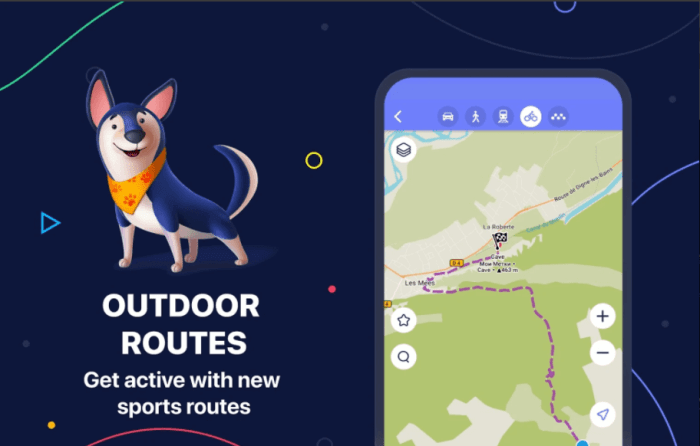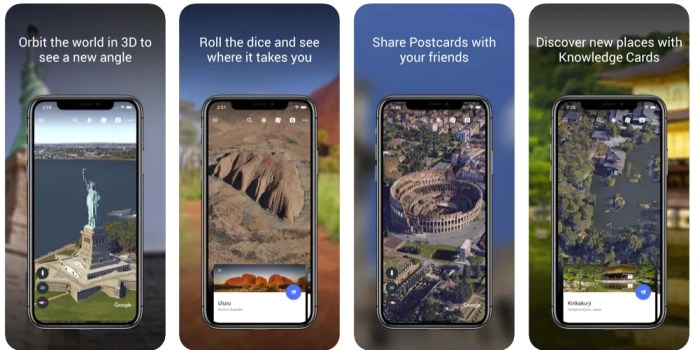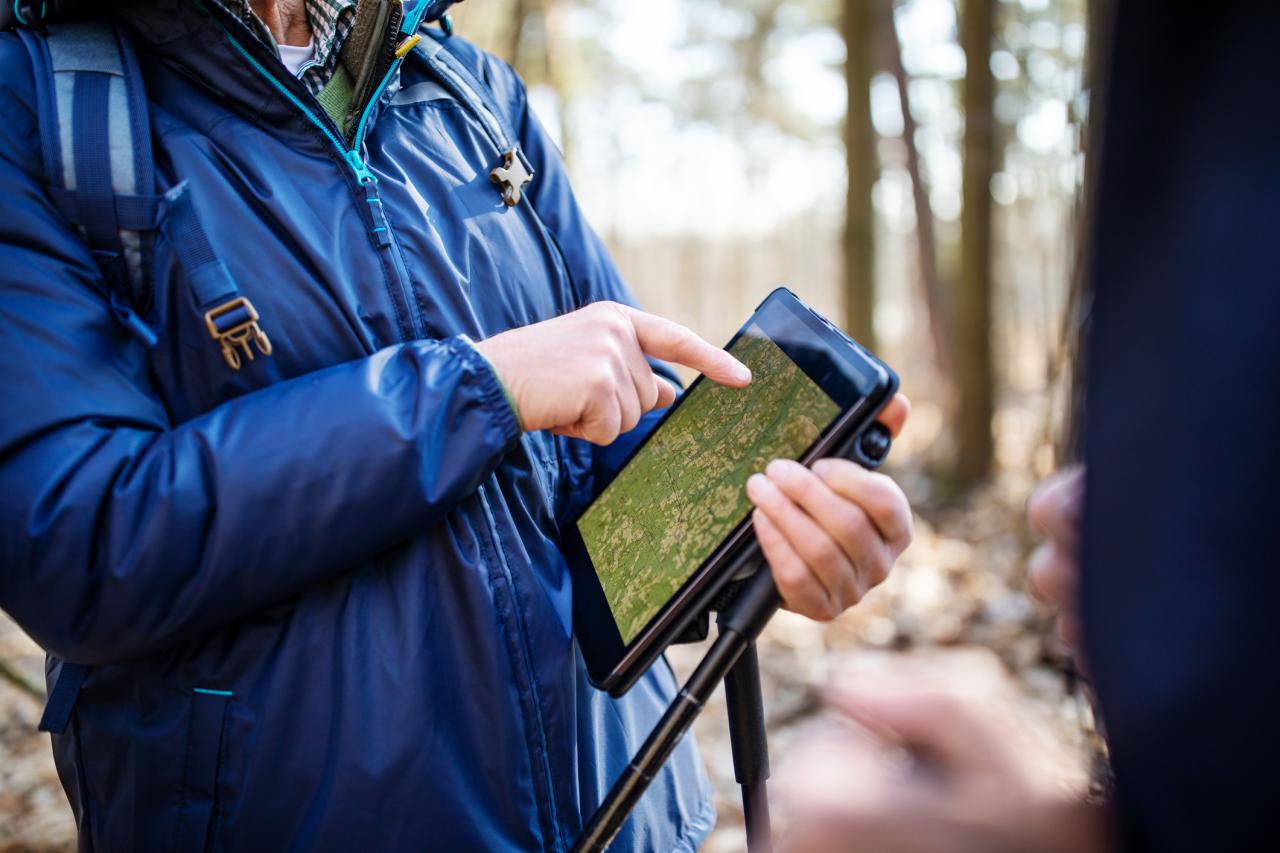Hiking trails near me app is revolutionizing outdoor exploration, offering a convenient and comprehensive guide to nearby trails. This app empowers users to discover stunning landscapes and thrilling adventures, providing detailed maps, real-time tracking, and user-generated insights. From novice hikers to seasoned explorers, this essential tool simplifies the journey to your next outdoor adventure.
The app’s functionality extends beyond basic trail navigation, integrating user reviews, ratings, and offline map access for ultimate flexibility. This allows users to plan their hikes with confidence, regardless of location or connectivity. Further, detailed information about trail conditions, difficulty levels, and nearby amenities further enhances the user experience.
Introduction to Hiking Trails Near Me Apps
Hiking trails near me apps are digital tools designed to simplify the planning and execution of outdoor adventures. They offer a centralized platform for users to discover, research, and navigate hiking trails in their vicinity. This functionality extends beyond basic route information, often incorporating crucial details like elevation gain, trail difficulty, and user reviews. This allows users to tailor their choices to their specific fitness levels and preferences.These applications provide a dynamic and user-friendly interface to locate and explore nearby hiking trails.
They leverage GPS technology and comprehensive databases to equip users with essential information, transforming the experience from a potentially daunting task to a streamlined and engaging activity. The applications cater to a diverse user base, from seasoned hikers seeking challenging routes to casual enthusiasts looking for leisurely strolls.
Key Features of Hiking Trails Near Me Apps
These applications provide a wealth of information beyond basic trail data. Essential features typically include interactive maps, detailed trail descriptions, elevation profiles, difficulty ratings, and user reviews. These features empower users to make informed decisions about their hikes. Furthermore, many apps incorporate functionalities like offline maps, GPS tracking, and sharing options, enabling users to plan and document their adventures seamlessly.
- Interactive Maps: These maps enable users to visualize trails, pinpoint locations, and plan routes based on specific criteria like distance and elevation.
- Detailed Trail Descriptions: Comprehensive descriptions of each trail provide crucial information about the terrain, expected difficulty, and any notable features encountered along the route.
- Elevation Profiles: Visual representations of elevation changes aid users in assessing the physical demands of a particular trail and ensuring it aligns with their fitness goals.
- Difficulty Ratings: Subjective and objective assessments of trail difficulty are provided, using factors like elevation gain, terrain complexity, and distance to ensure hikers select a trail appropriate for their skill level.
- User Reviews and Ratings: These allow users to share their experiences, offering insights into trail conditions, scenery, and overall enjoyment, which can help prospective hikers make informed decisions.
- Offline Maps: Downloading maps for offline access eliminates the need for internet connectivity in remote areas, crucial for navigating trails without cellular service.
- GPS Tracking: This feature allows users to record their progress, monitor their location, and share their hiking route with others.
- Sharing Options: Sharing features empower users to share their hiking experiences with friends and family, enhancing social interaction and promoting outdoor activities.
Target Audience
These apps cater to a wide range of individuals, from casual hikers to experienced outdoor enthusiasts. The applications are designed for people seeking to explore local trails, plan family outings, or engage in more demanding physical activities. The features of these applications are designed to be accessible to users of varying technical expertise.
Popular Hiking Trails Near Me Apps
Examples of popular hiking trails near me apps include AllTrails, Hiking Project, and Gaia GPS. These apps offer a range of features and functionalities to meet the needs of different users.
Comparison of Hiking Trails Near Me Apps
| App Name | Key Features | User Ratings |
|---|---|---|
| AllTrails | Interactive maps, detailed trail descriptions, user reviews, offline maps, GPS tracking | 4.5 out of 5 stars (based on app store reviews) |
| Hiking Project | Detailed elevation profiles, difficulty ratings, community forums, route planning tools | 4.3 out of 5 stars (based on app store reviews) |
| Gaia GPS | Offline maps, advanced GPS tracking, topographical maps, route sharing | 4.6 out of 5 stars (based on app store reviews) |
Features and Functionality

Source: squarespace-cdn.com
Hiking trails near me apps have become indispensable tools for outdoor enthusiasts, providing access to crucial information and enhancing the overall hiking experience. Accurate and up-to-date data is paramount for safe and enjoyable explorations. The effectiveness of these apps hinges on a comprehensive suite of features that cater to diverse user needs and preferences.A well-designed app empowers users with essential tools to plan, navigate, and experience trails effectively.
These features, from precise mapping to social interactions, contribute to the overall value and utility of the application. A critical element is the provision of accurate and reliable information to minimize risks and enhance user satisfaction.
Accurate Trail Maps
Accurate trail maps are fundamental to the success of hiking apps. They must depict trails with precision, including elevation changes, difficulty levels, and potential hazards. Users rely on these maps for route planning and safe navigation. Clear and detailed trail markings on the map significantly reduce the risk of getting lost or deviating from the intended path.
This aspect is crucial for users of all experience levels. Detailed maps allow users to visualize the terrain and plan their routes accordingly.
Real-time Location Tracking
Real-time location tracking provides invaluable support for hikers. It ensures that users stay on the designated path and assists in identifying any deviations or potential hazards. The feature also helps users avoid getting lost and aids in emergency situations. Accurate location tracking allows users to share their location with trusted contacts and receive timely alerts if needed.
The data can be used for route optimization and enhanced user experience.
User Reviews and Ratings
User reviews and ratings play a significant role in shaping the app’s value proposition. They provide insights into the quality of the trails, including difficulty levels, scenery, and amenities. Users can gain a better understanding of the terrain, expected conditions, and other important factors based on the reviews and ratings. Positive user experiences and feedback are crucial in shaping the future of hiking trail apps and ensuring the quality of information.
Offline Map Access
Offline map access is a vital feature for hikers in areas with limited or no cellular service. This feature enables navigation even in remote or challenging locations. Having offline maps ensures that users can continue their hike even when they lose connectivity. The ability to access trail maps without an internet connection is a significant benefit for users exploring less populated areas.
Offline maps are crucial for ensuring uninterrupted navigation, especially when in remote areas.
Navigation Features
The diverse navigation features offered in hiking trails near me apps enhance the user experience and improve safety. These features contribute to an overall better hiking experience, enabling users to explore trails effectively.
| Feature | Description | Example |
|---|---|---|
| Route Planning | Allows users to create and customize routes based on their preferences and objectives. | Defining a route based on distance, elevation gain, and specific landmarks. |
| Turn-by-Turn Directions | Provides step-by-step instructions for navigating the chosen route. | Visual directions, using icons or voice prompts, to guide the user through the trail. |
| Trailhead Information | Offers details about trailheads, including parking availability, facilities, and nearby amenities. | Information about parking spots, restrooms, and other essential services near the trailhead. |
| Elevation Profiles | Provides a visual representation of the elevation changes along the route. | A graphical representation showing the ascent and descent of a trail. |
| Compass Navigation | Provides a digital compass to aid in navigation. | Digital compass overlay showing the direction of the trail. |
User Experience and Interface Design: Hiking Trails Near Me App
A compelling hiking trails app must prioritize user experience (UX) to drive adoption and engagement. A seamless and intuitive interface is crucial for users to effortlessly discover, plan, and enjoy their outdoor adventures. Effective UX design ensures users feel confident and empowered to navigate the app and its functionalities.User-friendly design is paramount for a successful app. A polished and intuitive interface fosters a positive user experience, encouraging repeat use and ultimately driving app success.
Users are more likely to utilize an app if it’s simple and straightforward to navigate.
Finding hiking trails near you is easier than ever with dedicated apps. Understanding the nuances of hiking, however, requires more than just proximity. A deeper dive into the Hiking Definition reveals the key elements that truly define the activity. These apps leverage this knowledge, helping users find trails aligned with their experience levels and desired challenges, thus ensuring a rewarding and safe hiking experience.
Impact of User-Friendliness on App Adoption
User-friendliness directly impacts app adoption rates. A well-designed interface reduces friction, making it easier for users to complete desired tasks. A positive initial experience fosters user loyalty and encourages repeat use, strengthening the app’s presence in the market. Users who find the app easy to use are more likely to recommend it to others.
Importance of Clear and Concise Information
Clear and concise information presentation is vital for user comprehension. Users should be able to quickly grasp the essential details of each trail, such as difficulty, distance, elevation gain, and notable features. Unnecessary jargon or overly complex descriptions can frustrate users and deter them from exploring further.
Visual Appeal and User Engagement
Visually appealing interfaces enhance user engagement. High-quality maps, detailed trail descriptions, and visually attractive images of landscapes can evoke a sense of adventure and encourage exploration. Users are more likely to interact with an aesthetically pleasing app, leading to increased engagement and app usage. This visual aspect reinforces the app’s value proposition.
Intuitive Navigation
Intuitive navigation within the app is essential for user satisfaction. Users should be able to easily locate trails, filter options, and access necessary information without confusion. Clear labels, logical categorization, and well-placed navigational elements create a seamless user journey. A well-designed navigation system reduces user frustration and ensures a positive experience.
User Interface Elements
A well-structured app interface should include several crucial elements for optimal user experience. This table Artikels key elements, their purposes, and relevant examples.
| Element | Purpose | Example |
|---|---|---|
| Map | Visual representation of trails and surrounding areas. | Interactive map with trail markers, elevation profiles, and user location. |
| Trail Details | Comprehensive information about each trail. | Distance, elevation gain, difficulty rating, and notable features. |
| Search Bar | Allows users to find specific trails quickly. | Search by trail name, location, or s. |
| Filter Options | Allows users to refine their search criteria. | Filter by difficulty, distance, or terrain type. |
| Profile Section | Provides personal information and saved preferences. | Saved trails, user profile, and settings. |
| Navigation Buttons | Enables users to navigate through the app. | Buttons for “Back,” “Next,” and “Home.” |
Data Sources and Information Accuracy
Building trust in a hiking trail app hinges on the accuracy and reliability of its data. Users rely on the app’s information to plan safe and enjoyable outings, and inaccurate data can lead to mishaps or frustrating experiences. This section explores the critical aspects of ensuring the trail data is not only current but also trustworthy.
Methods for Collecting and Verifying Trail Data
Accurate trail data relies on meticulous collection and verification processes. These methods involve diverse sources and rigorous validation procedures. Trail information should be gathered from multiple sources to ensure comprehensiveness and avoid bias. This includes direct observation by app developers, local park rangers, and user-submitted reports. The verification process is crucial; it should involve independent audits of trail conditions and data consistency across different platforms and sources.
Factors Affecting User Trust
The accuracy and reliability of the trail data directly influence user trust in the app. Users are more likely to rely on an app with a proven track record of accurate and up-to-date information. Conversely, inconsistencies, errors, or outdated data can erode trust and deter users from relying on the app’s guidance. The app should actively address user feedback and promptly update inaccurate information.
Potential Sources of Errors in Trail Data
Trail data can be susceptible to various errors. Natural phenomena like landslides or floods can alter trail conditions unexpectedly. Human errors in data entry or inaccurate mapping can also contribute to discrepancies. Furthermore, maintenance schedules or changes in trail access policies might not be reflected in the app’s data. Data from outdated surveys or poorly documented trail modifications are also potential sources of error.
Strategies for Maintaining Accurate and Up-to-Date Information
Maintaining accurate trail data requires a proactive and ongoing approach. A robust system for user feedback integration is essential. This system should allow users to report changes, damaged areas, or other critical updates. Regular field checks by app developers or partners (e.g., park rangers) are crucial for verifying and updating the data in real-time. Implementing a system for automated updates based on reported changes, coupled with regular trail audits, will ensure the app’s information remains current and reliable.
Table of Data Sources
| Source | Data Type | Reliability |
|---|---|---|
| Local Park Rangers | Trail conditions, closures, maintenance schedules | High |
| User-submitted Reports | Recent trail issues, detours, hazards | Medium-High (requires verification) |
| Governmental Records | Official trail maps, regulations, and permits | High |
| Satellite Imagery | Trail visibility, recent changes | Medium (requires interpretation) |
| Historical Trail Maps | Historical trail information | Low (needs corroboration with current data) |
Offline Capabilities and Accessibility
Hiking trails near me apps are increasingly crucial for outdoor enthusiasts. Their utility extends far beyond providing trailhead information; reliable access to vital data in areas with limited connectivity is paramount. Offline functionality enhances the user experience by ensuring navigability and safety, especially in remote regions.
Importance of Offline Functionality
The ability to access hiking trail information without an internet connection is essential for a positive user experience, particularly in areas with unreliable or nonexistent mobile data coverage. This feature is critical for safety, enabling hikers to navigate challenging terrain and potentially find their way back to civilization even in remote areas.
Benefits of Offline Access for Users in Areas with Limited Connectivity
Offline access to maps, trail details, and emergency contacts is invaluable for hikers in areas with limited connectivity. This capability ensures continued navigation in the absence of a signal, facilitating safer and more enjoyable adventures. Hikers can download essential information beforehand, eliminating the risk of getting lost or encountering unexpected situations due to connectivity issues.
Impact of Offline Map Access on User Experience
Offline map access significantly enhances the user experience by enabling hikers to plan their routes, navigate trails, and find points of interest without relying on a constant internet connection. This feature promotes user confidence, especially in unfamiliar environments. It enables hikers to make informed decisions about their journeys and manage potential challenges effectively.
Examples of Offline Features in Popular Hiking Trails Near Me Apps
Many popular hiking trails near me apps offer offline map downloads, allowing users to access detailed trail information, including elevation profiles, waypoints, and points of interest, even without internet access. These apps typically provide options for downloading specific trail sections or entire regions, giving users the flexibility to customize their offline experiences. For instance, some apps might offer a feature to download the complete trail network of a national park, enabling access to all available trails even in areas with limited cellular service.
Finding hiking trails near me is easier than ever with dedicated apps. These apps offer detailed maps and reviews, but for truly great hikes, check out resources like good hikes near me. Ultimately, these apps streamline the process of discovering and planning exceptional outdoor adventures.
Offline Capabilities of Different Hiking Trails Near Me Apps
| App Name | Offline Map Access | Offline Data Storage |
|---|---|---|
| App A | Yes, specific regions downloadable | Limited storage, based on downloaded maps |
| App B | Yes, entire region or trail network | User-defined storage limits |
| App C | Yes, with detailed elevation profiles | Limited storage, based on downloaded data |
| App D | Yes, with customizable download options | Large storage capacity, expandable |
Integration with Other Features

Source: mavigadget.com
Hiking trails near me apps are increasingly integrating with other services to enhance the user experience and provide a more comprehensive platform. This integration not only improves the core functionality of the app but also encourages user engagement and creates a more interconnected ecosystem for outdoor enthusiasts. The seamless fusion of different technologies expands the app’s capabilities, offering users a more holistic and efficient way to plan and enjoy their adventures.
Hiking trails near me apps are invaluable for planning outdoor adventures. Finding scenic hiking trails near you, like those detailed in scenic hiking trails near me , is key to a successful outing. These apps streamline the process, helping you discover and navigate diverse trails, from easy strolls to challenging climbs.
Fitness Tracking App Integration
Integration with fitness tracking apps is crucial for hikers. Users can track their progress, calories burned, and other metrics related to their hikes. This data can be visualized alongside trail information, providing a holistic view of the entire activity. For instance, a hiker can see how their heart rate changes during different sections of a trail, which can help them understand their exertion levels.
This synergy between hiking and fitness tracking apps allows users to achieve their fitness goals while exploring the outdoors.
Social Features for Enhanced Engagement
Social features are critical for encouraging user engagement. Users can share their hiking experiences with friends and followers on social media platforms. This fosters a sense of community and allows users to connect with others who share similar interests. Many apps utilize social media integration to allow users to review trails, share photos, and rate difficulty levels, enriching the overall user experience and fostering a supportive network.
GPS Device Integration
Integration with GPS devices is essential for accurate location tracking and navigation. This feature allows users to navigate trails with precision and avoid getting lost. Many apps allow users to save their own tracks, which provides a detailed record of their hiking adventures. This feature is especially beneficial for users who want to explore new areas or revisit their favorite trails.
This integration is critical for safety and ensures the user can accurately pinpoint their location.
Hiking trails near me apps are increasingly popular, offering curated lists of local paths. Beyond general hiking trails, discovering creek trails near me, like those featured in this helpful guide creek trails near me , adds a unique dimension to the app experience. This allows users to refine their search and discover hidden gems, ultimately enriching the overall hiking trails near me app experience.
Examples of Successful Integrations
Several apps in the hiking trails near me category have successfully integrated with other services. One example involves linking with fitness trackers to display real-time heart rate data alongside trail elevation profiles. Another successful example is the integration with social media platforms, enabling users to share their hiking experiences and connect with other outdoor enthusiasts. Such integration fosters a sense of community and encourages exploration.
Table of Integration Options
| Feature | Integration Type | Example |
|---|---|---|
| Fitness Tracking | Data Synchronization | Linking with Strava to track calories burned and heart rate during hikes. |
| Social Media | Sharing and Community Building | Enabling users to post photos and reviews of trails on Facebook or Instagram. |
| GPS Devices | Route Planning and Navigation | Allowing users to import GPX files from their GPS devices for detailed trail information. |
Content Creation and Visual Representation

Source: wideopenspaces.com
High-quality content and compelling visuals are critical for a hiking trail app’s success. Users need detailed, accurate information and engaging visuals to make informed decisions and plan enjoyable excursions. The app’s visual presentation directly impacts user engagement and the overall user experience.Effective visual representations, coupled with accurate descriptions, form the core of a useful hiking trail app. These aspects not only guide users but also enhance their understanding of the trails, ultimately leading to a more rewarding and safer hiking experience.
Importance of High-Quality Trail Descriptions
Detailed descriptions of hiking trails are paramount for informed decision-making. Users need to understand the trail’s difficulty, length, elevation gain, and potential hazards. Clear and concise language, incorporating relevant s, is essential for search engine optimization (). Descriptions should highlight key features, like scenic overlooks or challenging rock scrambles.
Examples of Effective Visual Representations of Trails
Effective visual representations showcase the trail’s character and difficulty. A high-resolution, panoramic view of the trailhead can set the scene. Detailed trail maps, with clearly marked turnings, are essential. Images and videos showcasing the trail’s terrain and surrounding environment enhance understanding and evoke anticipation. Consider including images of potential hazards or scenic viewpoints.
Role of Photos and Videos in Enhancing User Experience
High-quality photos and videos play a vital role in enhancing user experience. Images should accurately depict the trail’s features, including the terrain, vegetation, and surrounding landscape. Videos can provide dynamic perspectives, showing the trail’s flow and the experience of hiking it. For example, a short video showcasing the beauty of a sunrise over a mountain range could greatly increase user interest.
Importance of Clear Trail Markers and Signage in Visual Design
Clear trail markers and signage are crucial for user safety. The app’s visual design should reflect this, displaying accurate and easy-to-understand representations of trail markings. The visual representation should use consistent and clear symbology for different trail types, difficulty levels, and landmarks. This aids navigation and minimizes user errors.
Visual Representation Comparison Table, Hiking trails near me app
| Representation Type | Example | Advantages |
|---|---|---|
| Panoramic Trail View | A wide-angle photo or video of the trailhead and surrounding landscape | Provides a sense of scale and location, evokes anticipation, and sets the mood for the hike. |
| Detailed Trail Map | A map with clearly marked turnings, elevation profiles, and key landmarks | Facilitates navigation, allows users to plan their route, and provides an overview of the trail’s difficulty. |
| High-Resolution Photos of Trail Terrain | Close-up images of sections of the trail, showcasing rocks, streams, or challenging inclines | Provides crucial visual information about the trail’s terrain, allowing users to assess the difficulty and prepare accordingly. |
| Short Video Clips | Short videos showcasing the trail’s features, including scenic viewpoints or challenging sections | Offers dynamic and engaging content, capturing the essence of the hiking experience. |
Mobile App Development Considerations
Developing a successful hiking trails app demands meticulous attention to mobile app development considerations. This involves navigating the complexities of diverse user devices, optimizing performance for a seamless experience, and ensuring accurate data representation. The competitive landscape necessitates a deep understanding of user needs and technological advancements.Crafting a robust and user-friendly app hinges on addressing the technical challenges inherent in mobile development.
This includes optimizing for various screen sizes, battery life, and data connectivity. Performance optimization is paramount, as slow loading times and sluggish responses can deter users.
Challenges of Mobile App Development
Navigating the fragmentation of mobile operating systems and device types is a significant hurdle. Different screen sizes, resolutions, and processing capabilities necessitate tailoring the app’s design and functionality to various platforms and devices. Maintaining consistent user experience across Android and iOS, for instance, requires careful attention to platform-specific guidelines and APIs. Furthermore, ensuring compatibility with older devices and versions is crucial to reach a broader user base.
These considerations significantly impact development timelines and resources.
Importance of Optimizing App Performance
Optimizing app performance is vital for user satisfaction. Slow loading times, unresponsive interfaces, and high memory consumption can lead to a negative user experience. Careful attention must be paid to database queries, image loading, and background processes. Developers must leverage techniques like caching, asynchronous operations, and efficient algorithms to ensure swift and responsive app behavior. Minimizing the app’s size, while maintaining functionality, is also important.
A well-optimized app will offer a seamless user experience, leading to higher user engagement and positive reviews.
Considerations for Different Mobile Devices and Operating Systems
The mobile landscape is incredibly diverse, encompassing various screen sizes, resolutions, and operating systems. Understanding and addressing the unique needs of each platform is essential. Different operating systems, like iOS and Android, have their own design guidelines and APIs, necessitating distinct approaches to app development. Furthermore, screen sizes vary greatly, from compact smartphones to large tablets. Adapting the layout and UI elements to accommodate these variations is critical for a cohesive user experience across devices.
Responsive design principles and flexible UI components are key to achieving this.
Examples of Successful Mobile App Designs
Several successful hiking apps demonstrate effective design principles. Apps like AllTrails, for example, prioritize clear navigation and intuitive interfaces, enabling users to easily discover trails and plan their hikes. These apps utilize visually appealing maps and detailed trail information. Another notable example is Gaia GPS, which emphasizes offline map access and comprehensive trail data. These successful apps illustrate the importance of a user-centered design, intuitive navigation, and comprehensive information.
Key Considerations for Mobile App Development
| Consideration | Description | Example |
|---|---|---|
| Platform Compatibility | Ensuring the app functions seamlessly across various operating systems (iOS, Android) and devices. | Utilizing cross-platform frameworks like React Native to develop a single codebase that works on both platforms. |
| Performance Optimization | Minimizing loading times, improving responsiveness, and managing resource consumption. | Implementing caching mechanisms to reduce repeated data retrieval and using asynchronous tasks to handle background operations efficiently. |
| User Interface (UI) Design | Creating a user-friendly and visually appealing interface that is intuitive and easy to navigate. | Employing a clean and consistent design language, incorporating clear icons, and prioritizing accessibility features. |
| Data Management | Efficiently storing, retrieving, and processing data for maps, trails, and user information. | Using a robust database system and optimized query techniques for fast data retrieval. |
| Security | Protecting user data and ensuring the app’s integrity. | Implementing encryption protocols and adhering to industry security best practices. |
Conclusion
In conclusion, hiking trails near me apps are transforming how we approach outdoor recreation. Their blend of comprehensive features, intuitive design, and reliable data sources makes them invaluable tools for planning and executing unforgettable hikes. The integration of offline capabilities, user reviews, and real-time tracking enhances the overall user experience, ensuring a smooth and engaging journey for all types of hikers.
This essential tool streamlines the process of finding and exploring nearby trails, ultimately enriching the outdoor experience.
Question Bank
What types of information does the app provide about trails?
The app provides detailed trail maps, difficulty levels, distances, estimated times, user reviews, ratings, and potentially amenities like parking areas, restrooms, and water sources.
Can I use the app in areas with limited or no cell service?
Yes, many apps offer offline map access, allowing you to download maps and trail data for use in areas with limited or no connectivity.
How can I report inaccurate or outdated trail information?
Most apps have a feature to report inaccurate information or suggest updates to the trail data. User feedback is vital to keeping the app’s data accurate and reliable.
Are there any safety features built into the app?
While some apps might include safety features such as emergency contacts, sharing your location, or real-time tracking, this is dependent on the specific app.






Leave a Reply